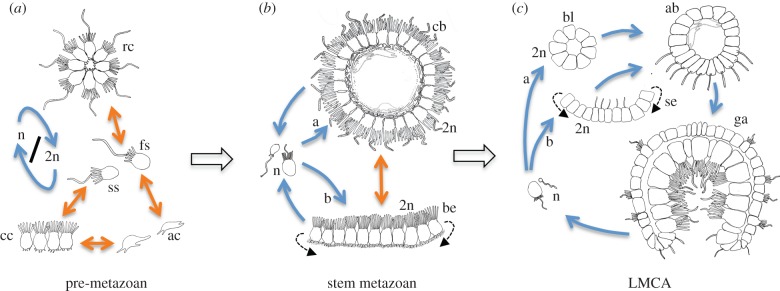Figure 2.
The origin of metazoans, involving a change from facultative transitions between forms (orange arrows) to fixed life-cycle transitions in development (blue arrows), and a move from temporal differentiation of cell types to spatial differentiation. Block arrows indicate direction of evolutionary change. (a) Pre-metazoan state with transitions between chain colonies (cc), amoeboid cells (ac), slow swimmers (ss), fast swimmers (fs) and rosette colonies (rc). 2n and n indicate life cycle transition between diploid and haploid state. (b) Stem metazoan. Variant (a): The zygote develops into a swimming choanoblastaea (cb). Variant (b): The zygote develops into a benthic, epithelial, biofilm-like organism (be). Transitions between the two forms might have occurred by epithelial curvature (stippled arrows) and closure. (c) Last metazoan common ancestor (LMCA). The zygote (2n) develops via cleavage into a blastula (bl; variant a), or, into a sheet-like embryo (se; variant b), which inverts into an amphiblastula larva (as seen in calcareous sponges; stippled arrows). The amphiblastula gastrulates into the adult gastraea (ga), which produces gametes and closes the life cycle.

